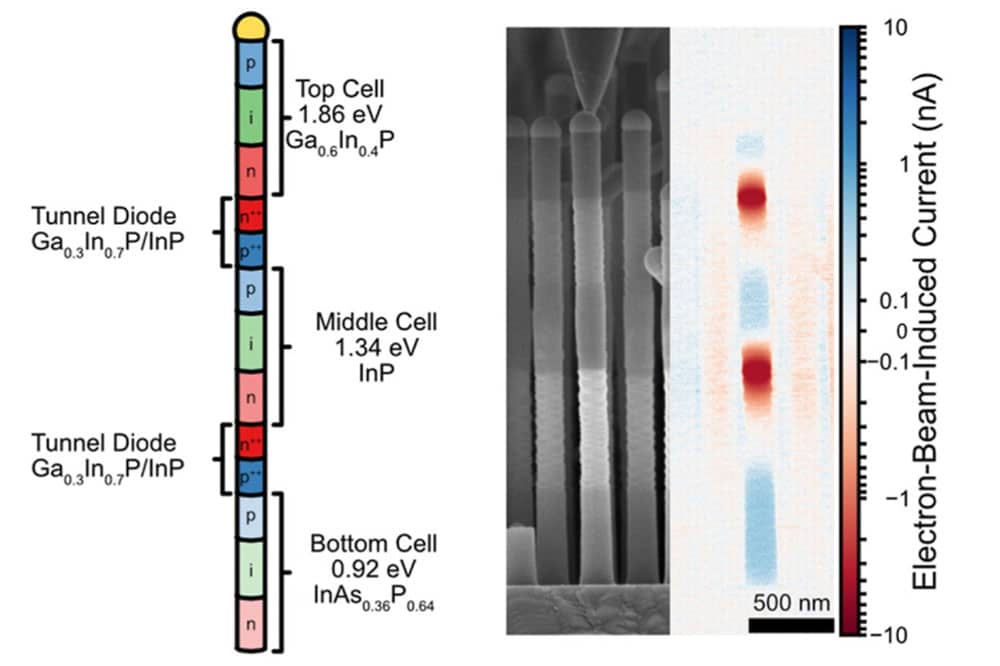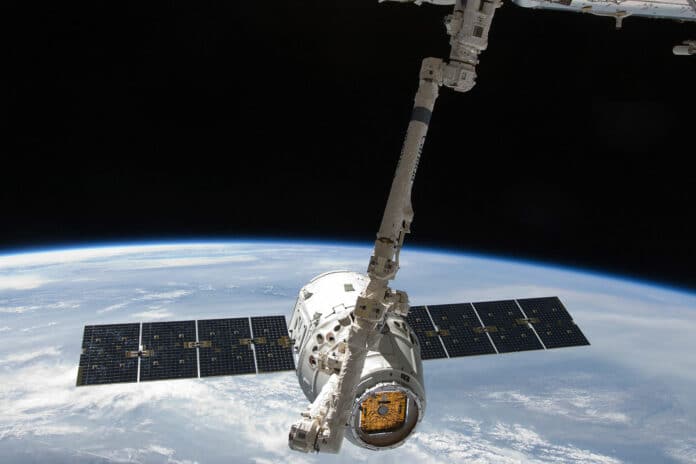Solar energy is the cleanest and most abundant renewable energy available. Solar cells are a good option for harvesting this energy. However, it is difficult to balance the cost and efficiency of traditional thin-film solar cells.
Nanowires are far superior in making high-efficiency, low-cost solar cells due to their advanced properties, such as the epitaxial combination of lattice-mismatched materials without plastic deformation. This could be utilized for the synthesis of axial tandem-junction nanowire solar cells with high efficiency at a low material cost.
Now, researchers at Lund University in Sweden have developed small solar radiation-collecting antennas – nanowires – that might work better in space than today’s silicon solar cells.
Since the new nanowires are light and require little material per unit of area, they will soon be tested on satellites, which are powered by solar cells and where efficiency and low weight are the most important factors. In fact, researchers already sent new solar cells into space a few days ago.
Last year, researchers succeeded in building photovoltaic nanowires with three different band gaps. This means that one and the same nanowire consists of three different materials that react to different parts of solar light.
Research teams around the world are increasingly researching tandem solar cells, which have different band gaps. Some research suggests it could roughly double the efficiency of today’s commercial silicon solar cells.
Silicon-based tandem solar cells are often built by synthesizing different semiconducting materials on top of each other. Lund researchers use a slightly different approach. They have developed a unique method to build extremely thin rods of semiconducting material on a substrate. This allows them to use a small amount of material per unit area, which cuts production costs and makes the method environmentally friendly.

The nanometre-thick rods consist of three materials containing different amounts of indium, arsenic, gallium, and phosphorus. In lab tests using these materials, researchers have so far achieved an efficiency of 16.7%. However, they believe that nanowire solar cells could reach 47% efficiency using the current structure with more band gaps.
Besides their improved light absorption, the nanowire solar cells also possess the durability required for space travel.
“A sheet of nanowires can be likened to a very sparse bed of nails. If some aggressive protons came along, which happens now and then, they would probably land between the wires, and if they happened to eliminate some wires, it would not matter very much. The damage could be worse if they land on a regular thin film,” says Magnus Borgström, who wrote the articles with the then-doctoral student Lukas Hrachowina.
To test their materials, the team recently fitted the nanowire solar cells on a research satellite. The satellite was sent into space in the second week of January by the researchers’ collaboration partners at the California Institute of Technology, Caltech, in the USA. The satellite will be in orbit during the spring, and the results are expected to be received on an ongoing basis.
Journal reference:
- Lukas Hrachowina, Yang Chena, Enrique Barrigón, Reine Wallenberg, Magnus T. Borgström. Realization of axially defined GaInP/InP/InAsP triple-junction photovoltaic nanowires for high-performance solar cells. Materials Today Energy, 2022; DOI: 10.1016/j.mtener.2022.101050
- Lukas Hrachowina, Enrique Barrigón and Magnus T. Borgström. Development and characterization of photovoltaic tandem-junction nanowires using electron-beam-induced current measurements. Nano Research, 2022; DOI: 10.1007/s12274-022-4469-1
